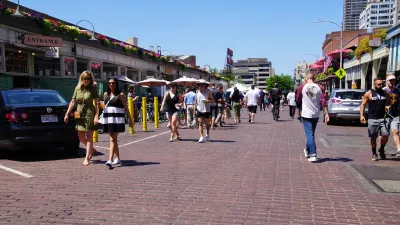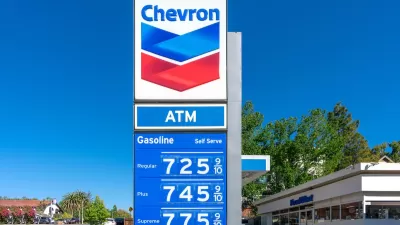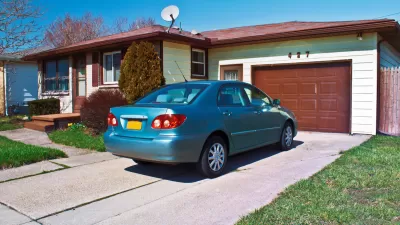The love affair between Americans and their cars is a well known trope. But according to a new paper from the Carnegie Endowment for International Peace on worldwide car usage, America's car ownership rate is among the lowest in the developed world.
Max Fisher discusses the data reported in a newly published Carnegie Endowment paper, which upends traditional ideas about car usage. It turns out that car ownership rates are higher in nearly every Western European country than in the United States. "The U.S. is ranked 25th in world by number of passenger cars per person,
just above Ireland and just below Bahrain," observes Fisher. "There are 439 cars here for
every thousand Americans, meaning a little more than two people for
every car."
So what explains this state of affairs? "The Carnegie paper explains that car ownership rates are closely tied to
the size of the middle class," explains Fisher. "In fact, the paper [titled "In Search of the Global Middle Class: A New Index"] actually measures car
ownership rates for the specific purpose of using that number to predict
middle class size."
So does the data indicate that the US has a disproportionately small middle class? Fisher isn't convinced: "Still, it's also possible that the answer has less to do with
Americans adhering to Carnegie's thesis about car ownership predicting
middle class size and more to do with other, particularly American
factors. Young Americans are spending less of their money on cars, as
Jordan Weissmann explained, as they get driver's licences at lower rates and spend more of their money on, say, high-tech smart phones."
FULL STORY: It's Official: Western Europeans Have More Cars Per Person Than Americans

Maui's Vacation Rental Debate Turns Ugly
Verbal attacks, misinformation campaigns and fistfights plague a high-stakes debate to convert thousands of vacation rentals into long-term housing.

Planetizen Federal Action Tracker
A weekly monitor of how Trump’s orders and actions are impacting planners and planning in America.

In Urban Planning, AI Prompting Could be the New Design Thinking
Creativity has long been key to great urban design. What if we see AI as our new creative partner?

King County Supportive Housing Program Offers Hope for Unhoused Residents
The county is taking a ‘Housing First’ approach that prioritizes getting people into housing, then offering wraparound supportive services.

Researchers Use AI to Get Clearer Picture of US Housing
Analysts are using artificial intelligence to supercharge their research by allowing them to comb through data faster. Though these AI tools can be error prone, they save time and housing researchers are optimistic about the future.

Making Shared Micromobility More Inclusive
Cities and shared mobility system operators can do more to include people with disabilities in planning and operations, per a new report.
Urban Design for Planners 1: Software Tools
This six-course series explores essential urban design concepts using open source software and equips planners with the tools they need to participate fully in the urban design process.
Planning for Universal Design
Learn the tools for implementing Universal Design in planning regulations.
planning NEXT
Appalachian Highlands Housing Partners
Mpact (founded as Rail~Volution)
City of Camden Redevelopment Agency
City of Astoria
City of Portland
City of Laramie





























